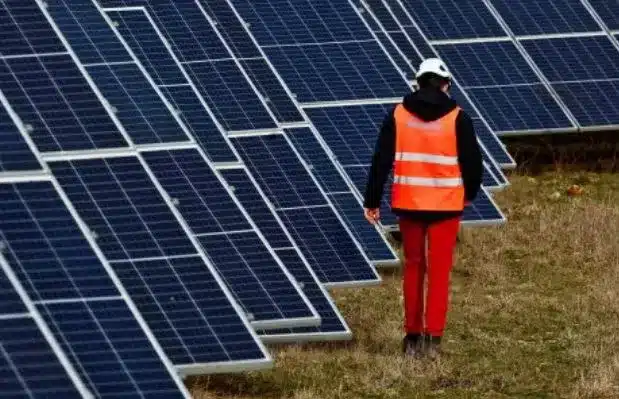What’s in today’s article?
- Why in News?
- International Solar Alliance (ISA)
- ISA’s Efforts to Overcome Barriers to Solar Deployment in Developing Countries
- India’s leadership role
Why in News?
India, alongside France, established the International Solar Alliance (ISA) at the 2015 Paris Climate Conference to promote solar energy deployment, particularly in developing nations. This marked a pioneering effort by India in global leadership for clean energy.
Since then, the ISA has grown into an intergovernmental organization with over 110 member countries. Despite its ambitious goals, the ISA’s progress in accelerating solar energy adoption in the developing world has been limited.
International Solar Alliance (ISA)
- Background – Global Solar Energy Imbalance and the Role of the ISA
- Solar energy is central to the global energy transition needed to combat climate change, being both the fastest-growing renewable source and the cheapest in sunny regions.
- Projections show that solar capacity could increase significantly to achieve net zero by 2050.
- However, deployment remains uneven: China alone accounts for 43% of global solar capacity, and the top 10 countries hold over 95% of installations.
- Africa, home to most of the world’s 745 million people without electricity, sees less than 2% of new solar additions.
- Additionally, over 80% of solar manufacturing is concentrated in China, limiting rapid solar expansion in smaller markets. The ISA was founded to address and balance this disparity.
- About
- ISA is a treaty based inter-governmental organization.
- ISA was conceived as a coalition of solar-resource-rich countries (which lie either completely or partly between the Tropic of Cancer and the Tropic of Capricorn) to address their special energy needs.
- It was launched jointly by India and France at the side-lines of COP 21 (held in Paris) in 2015. The Paris Declaration had established the ISA.
- It is working to create a global market system to tap the benefits of solar power and promote clean energy applications.
- HQ – Gurugram
- Objective
- The objective of ISA is to collectively address key common challenges to the scaling up of solar energy in line with their needs.
- To meet this objective, it aims to pave the way for future solar generation, storage and technologies for Member countries’ needs by mobilising over USD 1000 billion by 2030.
- Performance of ISA
- ISA was designed to be a facilitator rather than a direct developer of solar projects.
- It aimed to help countries address financial, technological, and regulatory barriers to boost solar energy deployment, especially in regions with low energy access.
- However, nearly nine years after its inception, the ISA has seen limited impact, with no operational projects yet.
- The first ISA-supported project, a 60 MW plant in Cuba, is still in development stages, with other countries in Africa and Latin America preparing for similar projects.
- ISA’s Limited Impact Amid Global Solar Growth Concentration
- Despite rapid global growth in solar energy, with an average 20% annual increase in capacity over the past five years and a 30% rise in 2023 alone, the ISA has struggled to facilitate broad deployment.
- According to the ISA’s World Solar Market Report 2024, China accounted for 62% (216 GW) of the 345 GW of new solar capacity added in 2023.
- Over 80% of solar investments are concentrated in developed nations, China, and large developing countries like India, limiting ISA’s intended impact on smaller or less-developed markets.

ISA’s Efforts to Overcome Barriers to Solar Deployment in Developing Countries
- ISA has focused on addressing significant entry barriers in smaller developing nations, especially in Africa, where large-scale solar project experience and local developers are lacking.
- Foreign investments require stable policies and regulatory frameworks, which ISA is helping to establish by working with governments and local institutions.
- Key initiatives include creating regulatory structures, drafting power purchase agreements, and establishing STAR (Solar Technology and Applications Resource) centers to build local expertise.
- ISA aims to deploy 1,000 GW of solar power and attract $1 trillion in investment by 2030.
India’s leadership role
- ISA was established not just to promote solar energy but as a strategic initiative for India’s outreach to the Global South, with a particular focus on Africa.
- Though an intergovernmental organization, ISA is widely seen as an Indian initiative due to its New Delhi headquarters, Indian funding, and Indian leadership of its general assembly, which will continue until at least 2026.
- PM Modi has highlighted ISA’s role as a symbol of India’s leadership for the Global South.
- However, ISA’s impact has been limited by underfunding, staffing shortages, and challenges in generating interest in solar energy among energy-deprived nations.
- Its underutilization affects India’s ambitions to lead and advocate for these countries on the global stage.
Q.1. What is the main objective of the International Solar Alliance?
ISA aims to promote solar energy, especially in developing countries, by addressing financial, technological, and regulatory barriers, with a target of deploying 1,000 GW of solar power by 2030.
Q.2. Why has ISA faced challenges in achieving its goals?
ISA’s impact has been limited due to concentrated solar investment in a few countries, underfunding, and limited local expertise in developing nations. ISA is working on regulatory frameworks and training to overcome these barriers.
News: Explained: Taking stock of the International Solar Alliance | MNRE |International Solar Alliance
Last updated on June, 2025
→ UPSC Notification 2025 was released on 22nd January 2025.
→ UPSC Prelims Result 2025 is out now for the CSE held on 25 May 2025.
→ UPSC Prelims Question Paper 2025 and Unofficial Prelims Answer Key 2025 are available now.
→ UPSC Calendar 2026 is released on 15th May, 2025.
→ The UPSC Vacancy 2025 were released 1129, out of which 979 were for UPSC CSE and remaining 150 are for UPSC IFoS.
→ UPSC Mains 2025 will be conducted on 22nd August 2025.
→ UPSC Prelims 2026 will be conducted on 24th May, 2026 & UPSC Mains 2026 will be conducted on 21st August 2026.
→ The UPSC Selection Process is of 3 stages-Prelims, Mains and Interview.
→ UPSC Result 2024 is released with latest UPSC Marksheet 2024. Check Now!
→ UPSC Toppers List 2024 is released now. Shakti Dubey is UPSC AIR 1 2024 Topper.
→ Also check Best IAS Coaching in Delhi
























